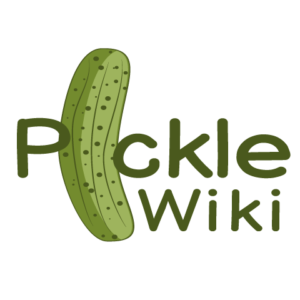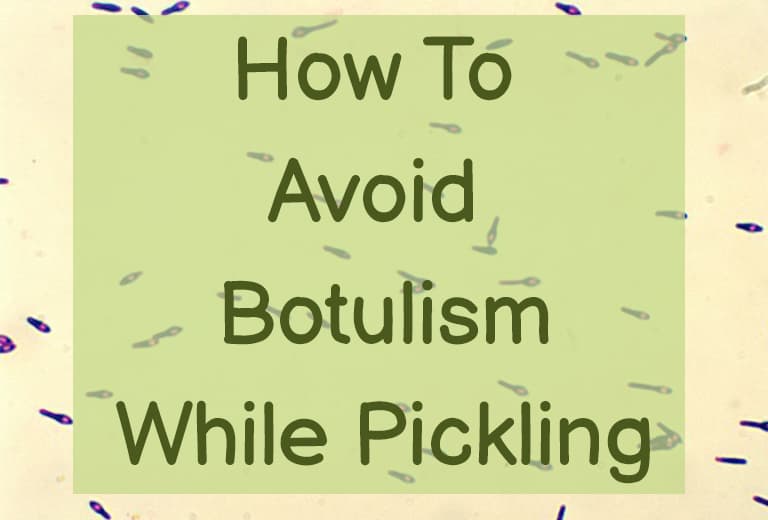Making your own pickles can be a lot of fun. However, when you complete the pickling process, you want to make sure to avoid botulism so you can enjoy those pickles without getting terribly sick.
Canning is the best method to avoid botulism when pickling. Proper canning will keep bacteria and air away from the pickles until you are ready to eat them. To can your pickles:
- Clean the jars
- Prepare the cucumbers and brine
- Fill up the jars and seal them
- Add to the water and boil for ten to fifteen minutes
Canning will make sure that the botulism is not able to survive in your pickles and that it will not have a chance to get back in later. Let’s take a closer look at some of the steps you should follow for canning as well as some tips to help keep your pickles safe and fresh while you store them.
What is Botulism?
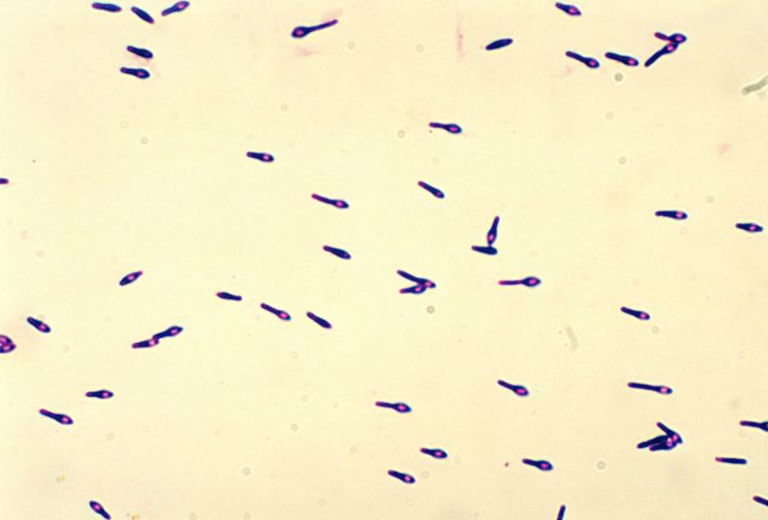
Before we take a look at the best process to use for preventing botulism, we also need to look at what botulism is. Botulism is a serious illness caused by the bacteria clostridium botulinum that can move through the body quickly. It starts out feeling like the common cold and then progresses to paralyzing the muscles. If the patient is not treated quickly, it can lead to death.
The Proven Process to Avoid Botulism: Canning
One of the best ways to prevent botulism in your pickles is to can them properly. This will kill all the bacteria that may get onto the pickles and prevents anything, including air, from getting inside until you are ready to use them.
Here is how to properly can your pickles.
Clean Your Jars
First, we need to clean our jars. You do not want to start with dirty jars. If the jars are dirty to start with, you automatically introduce bacteria to the process and nothing else you try will succeed.
Follow these steps to get your jars sparkling clean (and sterile!):
- Bring out a big stockpot and fill it with water.
- Add a rack onto the bottom and place the jars inside.
- Leave enough room around the jars to allow the water to get in between them.
- Pour enough water into the pot to cover the jars by an inch or more.
- Turn the heat on and let the water get to a roaring boil.
- Turn the heat off and let the jars sit in the water until you need them.
It is best to let the jars sit in the water until you are ready for them. Do not touch the jars more than you need to and when it is time to move them, wash your own hands well. You do not want to re-introduce bacteria and other diseases to the jars after they are clean.
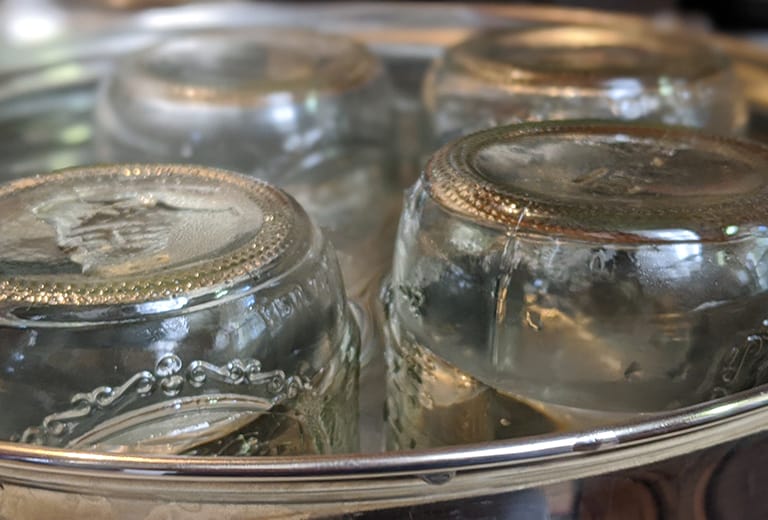
Preparing the Cucumbers
You can start working on the cucumbers next. This can be done while the jars are getting cleaned or after while they cool down. Preparing the cucumbers well makes it easier to have tasty pickles and also cleans off any bacteria or dirt that may get on them from the garden.
To prepare your cucumbers properly and safely:
- Clean the cucumbers off. Use some water and scrub all the dirt and everything else off.
- Trim off both ends of the cucumber. This means the stem as well. These bits are often bitter and it is best to avoid them.
- Slice up into the shape you want. Spears and chips are the two most popular options.
You will want to slice the cucumbers so they are not too thick. This helps them fit in the jar better and can make it easier for the brine to do its job. Also, remember not to overstuff the jar.
Make Your Pickle Brine
Once the cucumbers are clean, you can set them to the side and start making the pickle brine. This is the mixture that helps turn the cucumbers into the tasty pickles you want. There are a few different recipes you can use to create a pickle brine and the number of ingredients you need depends on the exact flavor you want to get from them.
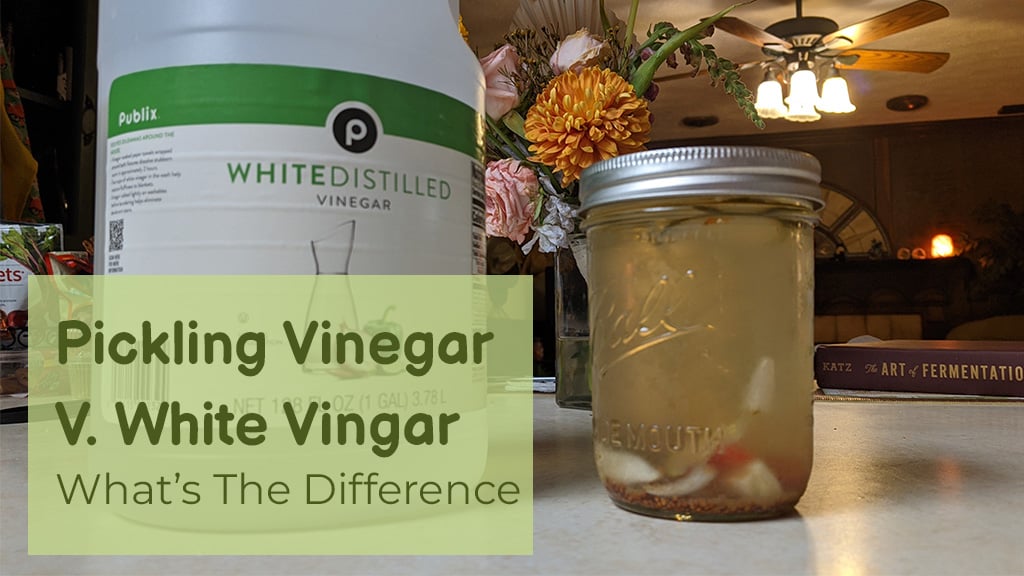
All recipes are a combination of:
- Water
- Salt
- White vinegar
Add all of these into a smaller pot and bring to a boil. Stir well until they are mixed and ready. This should only take a few minutes to complete.
Fill Your Jars
When the cucumbers and the pickle brine are ready, it is time to use both to fill up your jars. Add your cucumbers, however they are cut, into the jar and fill the rest of the area up with the brine. It is always best to leave a little room at the top of the jar. This allows the mixture to expand without ruining the jar—half an inch will do the trick.
Take care not to overfill the jars here. You do not want the pickles stuffed in so tightly they can barely move. This makes it impossible for the brine to move around inside the jar, leaving the cucumbers vulnerable to botulism and other diseases.
Sealing the Jars
It is important to seal up the jars well. This helps make sure air stays out and the pickles won’t get bacteria or anything else on them. A proper seal is crucial to ensuring your pickles will last a long time.
To properly seal up the jars, use the following steps:
- Find a knife or spatula and run it on along the insides of the jar to make sure all the air bubbles are gone. If these are still present, botulism has a chance to get in.
- Put the lids on top. Remember you can reuse the screw rings, but the vacuum lids need to be replaced each time.
- Tighten the lid down. You don’t need to use super strength to tighten these but make sure that they are nice and tight.
Take your time with this step because it ensures the jar is ready for canning and that no bacteria, including botulism, can get inside.
Put the Cans Back into Your Water
Once the jars are all filled and the lids are on tight, it is time to put the jars back into the pot with water and turn it on. A steady boil is perfect to get this done.
To vacuum seal your cans in boiling water:
- Give the jars about fifteen minutes to make sure the lids can seal well.
- Turn off the water after this time and give the jars time to cool down.
- If you have more than one batch, remove the jars from the pot and set it to the side to cool down.
- Add the other jars inside and repeat the process until done with all your work.
It is best to cool down the jars outside of the water. This helps if you have more than one batch of jars to seal. As the jars sit on your counter or workstation, you may hear the lids “pop”. This means the lids are sealing up and the canning process was successful.
Can I Spot Botulism in a Can?
If you followed the instructions above, you have completed the pickling process properly and have a very low chance of finding nasty bacteria inside your pickles.
However, if you make a mistake, have tried canning in the past before, or you receive canned pickles from someone else, you may wonder whether it is possible to spot botulism if it is present in the jar?
The answer is yes. It is possible to spot botulism in the can in most cases. Some of the signs to look for include:
- If the liquid inside looks milky and cloudy, then throw the can out.
- If you open up the can and you smell a bad odor, this is a sign the food went bad and you should throw it out.
- If you hear a hissing sound when you open a new jar of pickles (this means bacteria inside the jars have been eating and producing gas)
- You notice that the lid of a jar is loose, even if you have not opened it before.
- If you notice that the lid is bulging, even a little bit or the safety tab on top has popped up after canning.
- The jar is cracked, whether that crack is small or big.
- You notice the jar is leaking from somewhere.
Of course, some of these signs may point to another type of bacteria or bad thing in the food. Even if the sign doesn’t point directly to botulism, it is still best to throw the can right out when you spot them.
Anything that looks abnormal could be a sign of botulism or another disease. It is always best to throw out the food rather than risk your health.
How to Avoid Botulism in Pickles
Now that we have had a chance to see the proper technique for canning your pickles, we need to take a look at a few steps anyone can take to avoid botulism in your pickles. If you follow the steps above, you should be set to go. However, there are a few additional tips we can teach you.
Clean Out All Jars Before Using
This ensures nothing is left behind that will damage the pickles. You can:
- Wash them in warm water with soap and water.
- Wash them in boiling water on the stove.
- Wash them in a dishwasher, making sure the water temperature is hot.
Clean the jars thoroughly and let them air dry if possible. Use a towel or another object to handle them once cleaned to make sure you don’t introduce anything else to the jars before adding the pickles.
Use Enough Brine
Brine is your friend when it comes to the pickling process. This brine creates an environment that helps turn cucumbers into pickles while keeping botulism and other diseases away. Use enough brine to cover all the pickles, leaving about half an inch at the top of the jar to allow for expansion during the canning process.
Use Fresh Ingredients
It is also important to use fresh ingredients when you do pickling or any other type of canning. Fresh ingredients will not only look and taste better, but they help you avoid any contamination from productive itself.
When the ingredients are old and wilted, they already have some bacteria on them. That can increase the risk of bacteria, including botulism, getting into the end result.
Some things to consider here:
- Use the freshest ingredients you can find.
- Clean off all produce and ingredients possible before using it.
- Make sure your hands are clean before touching anything.
Follow the Recipe Directions When It Comes to Salt
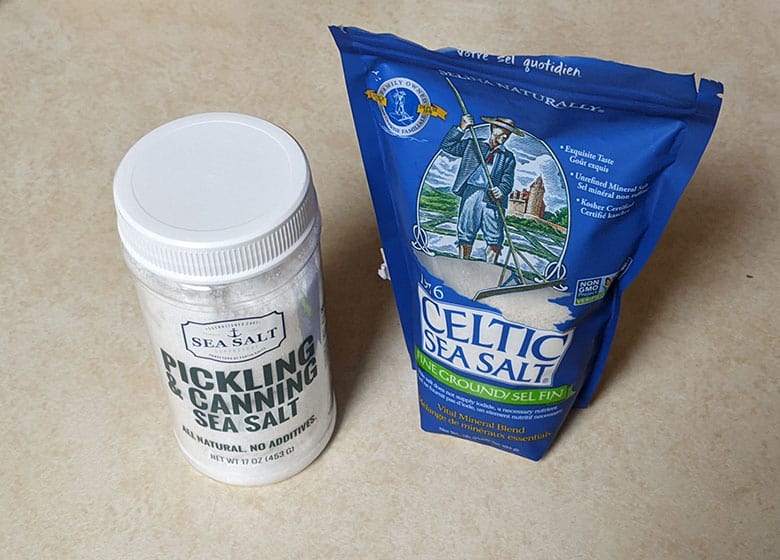
When you look at some of the pickling recipes, it may seem you need to add in a ton of salt. Do not skimp on the salt, even if you are trying to reduce your sodium intake. The salt is part of the process to create a proper environment for making pickles while also creating a bad environment for bacteria to grow.
If you decide not to put as much salt in, you may reduce the sodium content, but the environment around your pickles will not be hazardous enough for botulism and other bacteria. Follow the directions on your recipe to get the exact right amount of salt around your pickles.
Remember these tips:
- Always use the right amount of salt based on the recipe you choose.
- Give the salt time to dissolve into the brine with the other ingredients. You do not want clumps of it left when the bring is finished.
- Use the right kind of salt. Iodized or table salt will not create the right kind of environment so try to avoid those.
Slice the Cucumbers Thin Enough
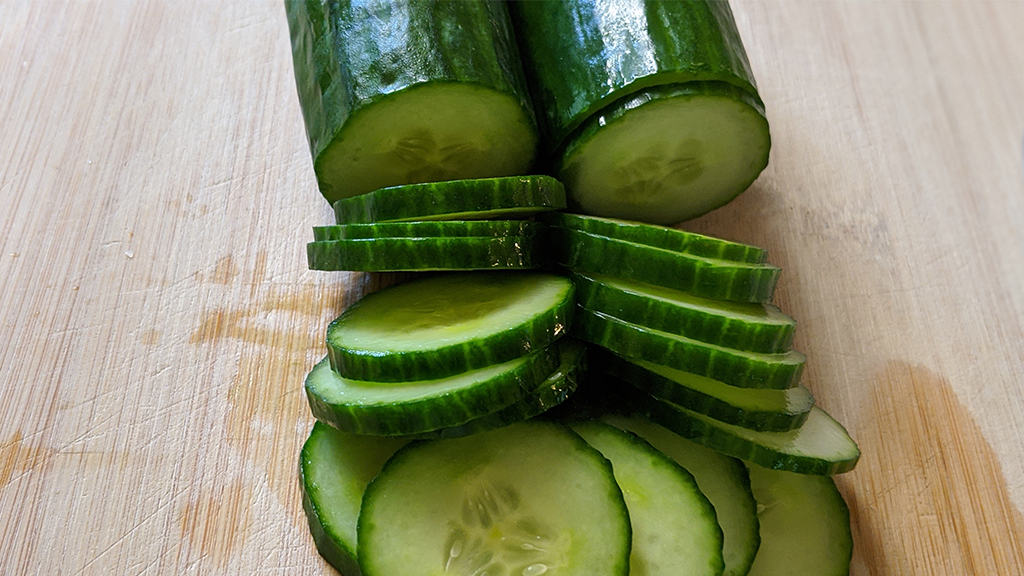
While you don’t need to slice them super-thin each time, you don’t want to get into a hurry and slice the cucumbers too thick either. Even thickness is best to help them fit into the jar and get covered in brine.
If you cut the slices too thick, it is hard for the brine to penetrate through, leaving lots of room for botulism and other diseases getting into the food. Don’t get into a hurry and slice the cucumbers too thick or stuff too many into the jar either.
Thicker sliced pickles, or unsliced pickles, will need a longer shelf time to ensure the brine is able to penetrate them and completely pickle them (killing all the bacteria inside).
Store the Pickles in the Right Place
It is always best to store your pickles in the right type of environment when the pickling process is done.
Some tips for storing your pickles:
- Store the jars in an area that is clean and dry all the time.
- Your pantry or a cupboard in the kitchen are excellent choices.
- A dry and clean area can be great for storing pickles for up to a year.
- Once you open the jar of pickles, place the jar into the fridge when not in use. Eat within a few weeks to avoid botulism and other diseases.
Use the Right Type of Water
Even the type of water you use will make a difference when it comes to helping you properly pickle your cucumbers. Tap water may have chemicals in it that will hinder all the good bacteria you introduce into the cucumbers. These good bacteria will help turn those cucumbers into pickles.
It is better to use distilled or purified water. These will enhance the fermentation process, providing the perfect environment to make pickles without allowing any bacteria to get in.
Putting Other Vegetables into the Jar
While you can add more than one vegetable into the same canning jar, this is generally not recommended. Each one has a different acidity level and will need to undergo different temperatures to keep them safe.
Not only does putting them together in the same jar mix the flavors, but it can also make one or more of the vegetables vulnerable to botulism and other diseases. It is best to add just one vegetable to each jar for amazing results.
Avoiding Botulism: Properly Can Your Pickles!
The best way to avoid getting botulism while pickling is to complete the canning process properly. The first time you try to can pickles, it seems difficult and impossible to complete. The more you do this though, the easier the process gets.
To can your pickles properly and avoid botulism, you simply:
- Clean out the jars you would like to use.
- Prepare the cucumbers and the pickle brine.
- Add both the cucumbers and pickle brine into the prepared jars
- Add the lids tightly on top
- Place into the water with a steady boil. Leave them there for ten to fifteen minutes.
- Take out of the water and give time to cool down before storing it.
You can choose to pickle many of these jars at one time or you can do just a few based on how many ingredients are available. When you follow the steps we outlined above, you are sure to get amazing pickles each time, without having to worry about botulism at all.
https://www.epicurious.com/expert-advice/how-to-can-pickles-weekend-warrior-article
